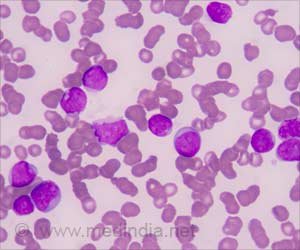How Have Survival Rates Improved for Kids With Acute Lymphatic Leukemia?

Within the study, modified treatment protocols for four subgroups were examined. The modifications were found to have positive effects on survival and quality of life. For example, the risk of disease recurrence became as much as three times smaller for children with an aggressive form of leukemia.
Acute lymphatic leukemia is the most common form of childhood cancer in the Netherlands(
). Every year, about 110 children are diagnosed with this form of cancer. The prognosis is good for many children, but not yet for every child. To improve
, the treatment protocol is constantly being adapted over the years on the basis of new scientific insights.
The study results of the ALL-11 treatment protocol, led by researchers at the Princess Mxima Center, were published today in the scientific journal Journal of Clinical Oncology.
Analyzing Modified Treatment in Pediatric Leukemia
Between April 2012 and July 2020, more than 800 children in the Netherlands were treated according to this protocol. The study looked at the effect of modified treatment in specific groups of children with leukemia, including those with a so-called Ikaros abnormality. Prof. Dr. Rob Pieters, pediatric oncologist and medical director of the Princess Mxima Center, led the clinical study. He says: ‘There is broad interest worldwide in this research, because it was still unknown how to improve therapy for children with Ikaros leukemia.’
Advertisement
In this study, these children received an additional year of ‘maintenance phase’ chemotherapy on top of the first two years of treatment. This modification led to a three times lower risk of the cancer returning: it only happened in 9% of them, compared to 26% of children in the previous treatment protocol.
In the ALL-11 protocol, doctors and researchers also looked at the effect of less intensive treatment for three other groups of children. These included children with a DNA abnormality in their leukemia cells that is associated with a very high cure rate, and children with Down syndrome who suffer a lot of side effects from therapy. These children were given lower amounts of anthracyclines, a particular type of chemotherapy that increases the risk of heart damage and infections. The modification turned out to be a good choice: the children had the same or even better survival rate while their quality of life improved due to a lower risk of infections and less risk of heart damage.
Prof. Dr. Rob Pieters: ‘The five-year survival rate for children with acute lymphoblastic leukemia has increased tremendously since the 1960s, from zero to 94%, but the last steps are the hardest. We are now one step closer to curing all children with ALL. We have also been able to remove a drug that gives risk of heart damage largely from the treatment of children with less aggressive disease. So the latest results for children with leukemia fit exactly with our mission: more cure, with fewer side effects.’
References :
- Improved Outcome for ALL by Prolonging Therapy for IKZF1 Deletion and Decreasing Therapy for Other Risk Groups – (https://ascopubs.org/doi/10.1200/JCO.22.02705)
li>Acute lymphoblastic leukemia (ALL) – (https://zorg.prinsesmaximacentrum.nl/en/diagnosis/acute-lymphoblastic-leukemia-all)
Source: Eurekalert
Source link
#Survival #Rates #Improved #Kids #Acute #Lymphatic #Leukemia



